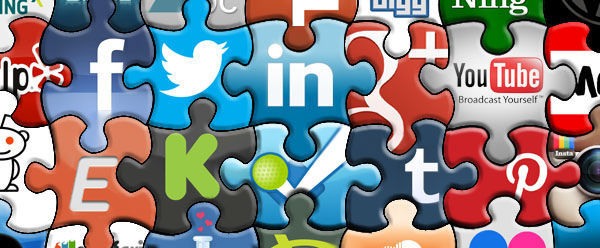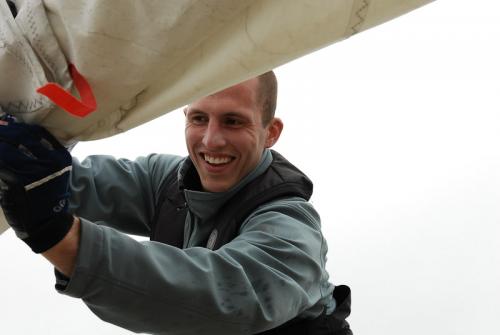This is an excerpt from Zero to Maker. Top image photo credit: greyweed.
A lot has been written about the maker movement and how new digital fabrication tools, makerspaces, and the Internet have blended together to create an array of opportunities for entrepreneurs, artists, and craftspeople. I’m not going to rehash the basics. Instead, I’m going to talk about some of the ways the new maker economy is different than the traditional way of doing business. More specifically, one of the most important lessons I learned over the past two years as I went from complete newbie to running a growing maker business: Share first. Share often.
A quick story:
Some people know exactly what they want to make.* When you explain the possibilities and opportunities afforded by tools, they know exactly what they would make. So it was with my friend Eric.
*When it comes to making, the first hurdle is usually when a beginner comes to the conclusion, “Well, I’m not even sure what I would make.” It’s too bad and, unfortunately, a terrible reason for not getting involved. I go into a lot more detail about this in the book.
Eric and I were having lunch together just outside of TechShop in San Francisco. I was there working on OpenROV, an open source underwater robot project that I co-founded, and his office was a block away. Eric and I hadn’t seen each other in months, and I quickly brought him up to date on everything that had transpired with OpenROV — the latest prototype, the Kickstarter project, and how we were building all of the kits. He was intensely curious. With his office next door, he knew all about TechShop, but had never gone inside to look around. I explained the tools, with Eric taking a particular interest in 3D printing (as many new makers do). I also made a point to emphasize the ideas of DIT and Just-In-Time learning. It wasn’t long into the conversation before I had him convinced that he was totally capable of making anything he could imagine.
I asked him if he had any ideas of something he wanted to make. He didn’t say anything, but looked slyly confident as he reached around to his back pocket and pulled out his credit cards wrapped in a thick blue rubber band.
"This," he said. He flipped his tightly wrapped stack of cards around in the air, and explained to me his obsession with finding a wallet that was small enough to fit comfortably in his back pocket. He’d been searching for the perfect solution, trying money clips and thin wallets, but nothing compared to his pleasure of using the elastic band. The only problem was that the rubber band would wear down and break every few weeks. He didn’t have any specifics but he knew he wanted to create a better rubber band wallet.
Admittedly, I was a little unimpressed. Sure, everyone loves a thinner wallet, but I never imagined a rubber band wallet meant anything more than a piece of blue rubber in Eric’s back pocket. I encouraged Eric to try to make it at TechShop, mainly because I wanted to get him in there and using the tools, but I didn’t think much about it after that.
It wasn’t until a few months later, while combing through different Kickstarter projects, that I would, again, cross paths with the rubber band wallet idea. I randomly stumbled onto a project called "TGT: A New Kind of Wallet."

The TGT wallet.
It was created by Jack Sutter. Jack first got the idea after seeing his roommate using a produce rubber band (taken from a stem of broccoli) as his wallet. He thought it was genius, and he wanted to take it to the next level. Another friend moved into the apartment and wanted to support Jack’s idea. She taught him how to sew and helped him make the first prototype of the wallet, which used a thicker elastic fabric with a striped design. Jack wanted to improve the design by adding a little pocket, so he met a furniture designer in New York City who let him take the leather scraps off the floor, which Jack turned into the next prototype design. Later on, after making numerous wallets, another friend helped Jack design packaging for his creations by cutting up an old cereal box. Around the same time, he had created a small logo for his new product, which he was calling TGT, and started sewing them into the wallets.
In a short amount of time, his inspiration had followed the winding and serendipitous path to becoming a quasi-product that Jack and all of his friends loved. The next logical step, of course, was for Jack to put the project up on Kickstarter.
Jack’s Kickstarter campaign was a huge success, raising over $317,000 from more than 7,500 backers. Apparently, there are a lot more people like Eric and Jack in the world than I ever could have imagined.
Of course, the first thing I did when I saw the Kickstarter project was send the link to Eric. He was also surprised to hear how successful the project had been. He was a little disappointed, too, that he didn’t follow through on his idea, but happy that the idea was finally out into the world.
I now refer to this story as my elastic wallet moment. I learned two important lessons from my conversation with Eric and watching the TGT Kickstarter campaign:
Ideas are nothing; prototypes are everything.
Eric knew he had a good idea. He even acted on it. He did extensive online searches, scoured retail locations, and bought relevant domain names. He thought about business models and marketing strategies. He went about the project in the traditional business way. Unfortunately, the new maker economy has rewritten the rules.
With the increasing ease of creating (and actually starting to sell) a prototype, it no longer makes sense to think in terms of the traditional business routine. Of course, once it’s up and running, the same accounting, inventory, and manufacturing planning used by more traditional businesses is applicable. But as you travel the M:A spectrum from 1:1 to 1:2 to 1:10, the only thing that matters is a functional prototype.
Prototype first; ask questions later.
Sharing is the new first-mover advantage.
Even if Eric had decided to create his own brand of elastic wallets (which he could definitely still do), he’d have a much more difficult time getting the same boost of support as Jack did on Kickstarter. There are only so many thin wallet enthusiasts within the Kickstarter universe, so running a successful project now would be an uphill battle.
It’s hard to replicate the ripple effect that Kickstarter creates across the Internet. It’s a unique opportunity to magnify your project and broadcast it around the world. Unfortunately, it’s an opportunity for an idea, not necessarily your idea. I’ve seen numerous projects that failed to pick up traction on crowdfunding websites simply because there was a high-profile, similar project that recently tore through the Internet headlines and sucked all the oxygen out of the blogosphere. For instance, Twine was the first connected device on Kickstarter that aimed to be the platform for the "Internet of Things." The idea was that the rooms and structures around us (and the things in them) should be connected to the Internet, thus they could be measured and controlled. In their Kickstarter video, Twine showed off their prototype sensing the temperature of a room, detecting motion and moisture, and other cool features that interested a wide array of backers. They ended their campaign with $556,541.
After Twine, Kickstarter has seen an influx of "Internet of Things" devices and few have been able to live up to the hype and success of Twine. [Twine certainly benefited from a first-mover advantage, but other Internet of Things companies have still had success. Notably, SmartThings has raised over $1.2 million. Coming in second on Kickstarter doesn’t mean you won’t be successful, but being first certainly helps.]
The old adage about first-mover advantage was that the spoils belonged to the first product to get to market. In the new maker economy, where the value of your product or company is defined by how others share and contribute to your project and business, the first-mover advantage is given to the first project on Kickstarter.









